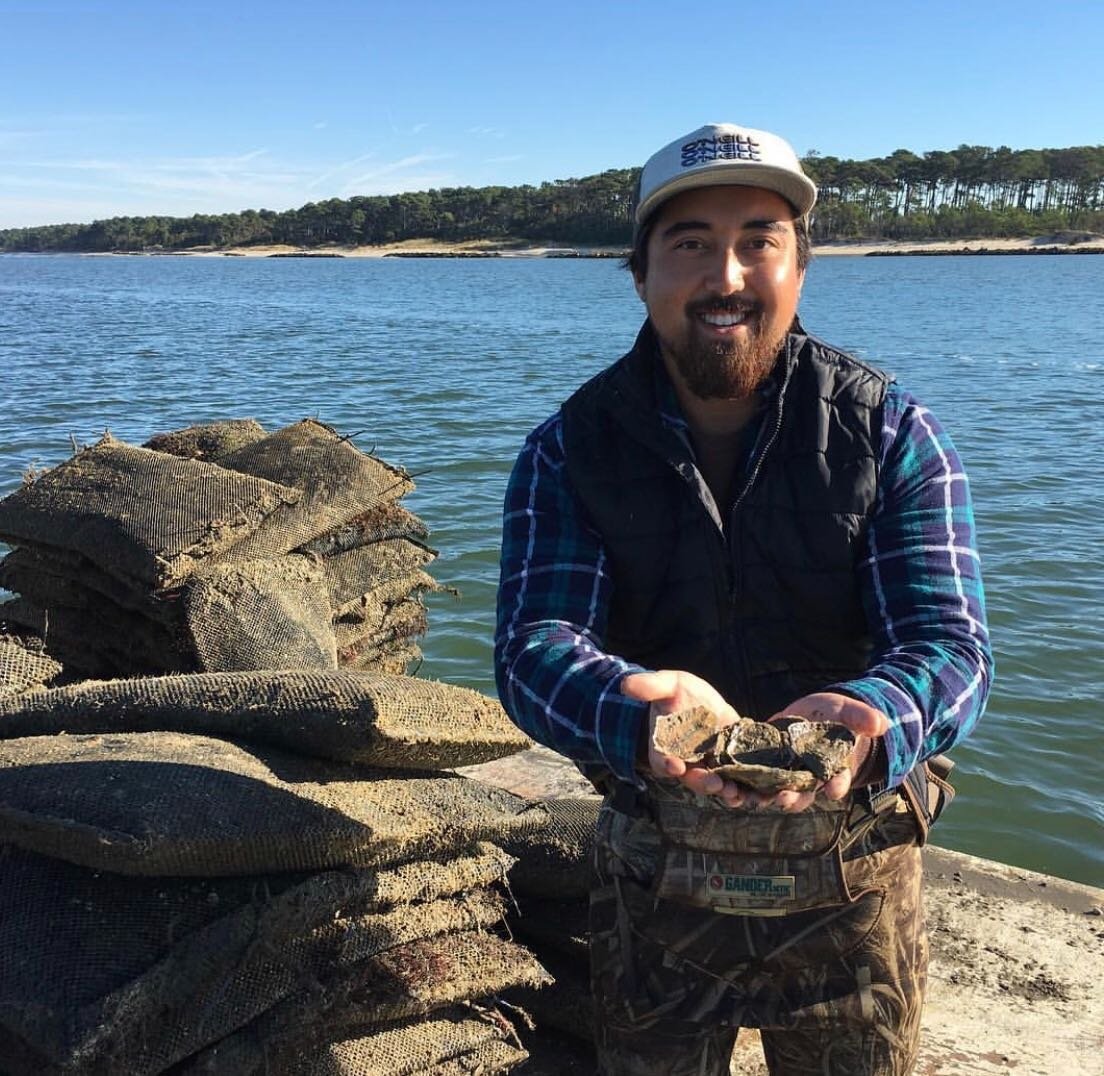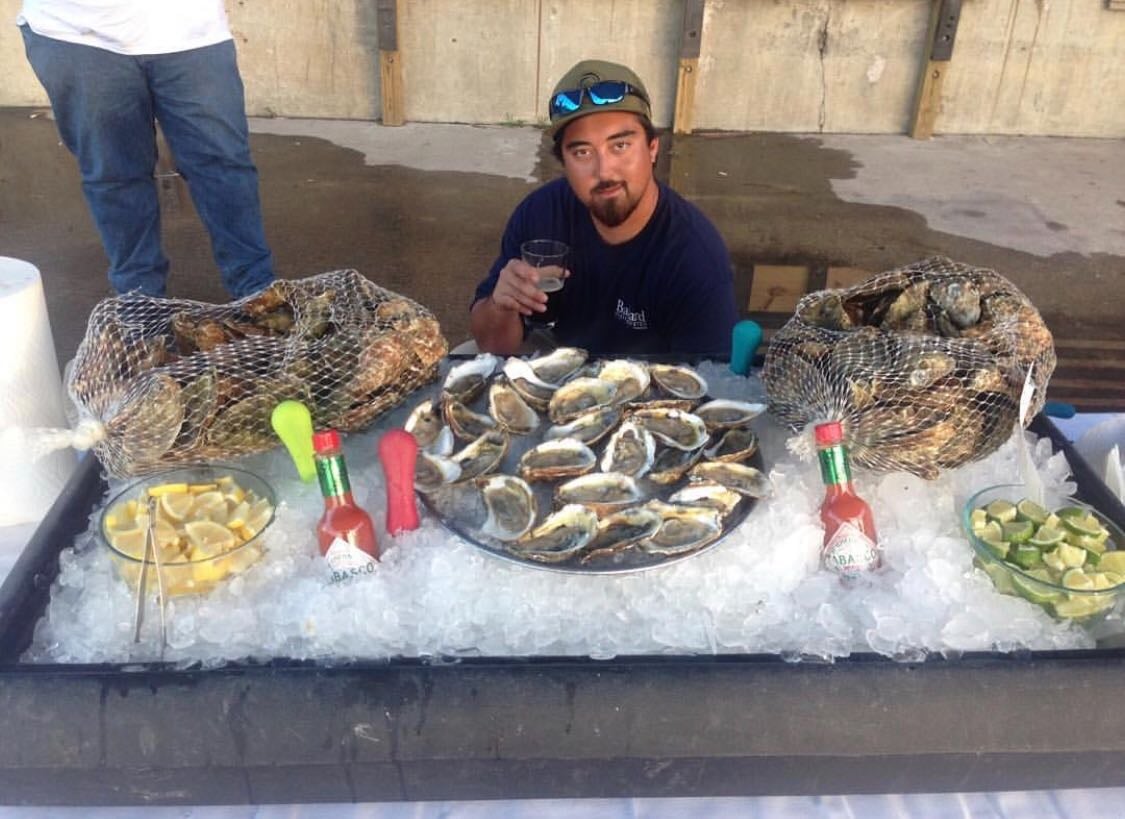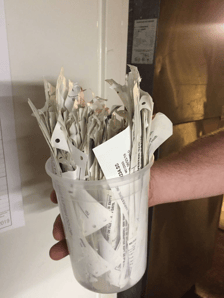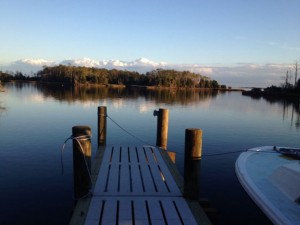
Below is a letter to the editor of Carteret County News-Times in North Carolina from Chris Matteo of Chadwick Creek Oysters. Chris is writing in response to a classic NIMBY article. A retired judge moved to town and wanted to "protect" his view by telling the locals what they could do. Chris' response is thoughtful and deserves a wide audience. Thank you Chris.
-----------------------------------------------------------
March 2, 2022
I am Chris Matteo, current president of North Carolina’s Shellfish Growers Association. I am not a retired district judge, but I am an oyster farmer with an Ivy League education (one of two in our state) and this evening I’m here to help you learn something new, Mr. Bentley. My background is not in law, but in finance and entrepreneurship. I used to invest money for large institutional clients, including pension funds, university endowments, and sovereign wealth funds. I understand a bit about economics. I too came here from somewhere else, yet I have earned the respect of many locals. I am asking the citizens and visitors of North Carolina to not fall prey to the hyperbole and fearmongering you have so generously supplied.
First off, oyster farming is not an unthinkable interference for boating and fishing. In fact, we have the support of recreational and commercial fishing organizations in North Carolina, as well as almost all environmental non-profits and universities. Wild oyster populations sit near 5% of historic levels. Educated people understand that without oysters, you have fewer fish and lower water quality. Oysters are a keystone species. Most aquatic species depend on the humble oyster. Heavily populated areas like Indian Beach are most vulnerable to water quality issues in their bordering estuaries because of developmental impacts. We (oyster farmers) are actually enhancing and restoring the ecological treasure of which you speak. You’re welcome.
Calling coastal North Carolina an economic miracle is a bit of a stretch. Yes, tourism in the Outer Banks is an impressive revenue generator. Those tourists/visitors can’t seem to get enough of the wonderful oysters grown locally. Just because one retires to coastal NC and lives off savings or a pension does not mean everyone lives that way. Home price appreciation recently has been impressive also. It’s not due to any economic miracles. It also prices locals out of their home markets.
The first item you mention on your list of reasons to move to coastal North Carolina is “good food.” Let’s focus on that one, since oysters are arguably the “greenest” and most sustainable form of protein production on Earth. Growing oysters is a regenerative farming practice that improves the environment, as shellfish filter our estuaries. Oysters have a negative carbon footprint. Gram for gram, oysters are the most micronutrient-dense food on the planet, second only to beef liver. Not only are oysters nutrient-dense, they are full of vitamins and minerals in which Americans are most deficient, namely Zinc, Iron, and Vitamin D. Oysters contain all three major classes of omega-3s: ALA, DHA, and EPA and fall within the top-ten most omega-3-rich sources of popular seafood, with about as much omega-3 as swordfish and bass, but with significantly less mercury. For a country that is overfed and undernourished, and a world that’s experiencing a crisis in ocean health and marine pollution, oysters are one of the best crops you can grow. Did I mention they are delicious?
You say that oyster farms in this state could possibly take up “thousands of water acres.” That would be wonderful! Back of the envelope, there are 1,900 square miles (1,216,000 acres) of water contained within North Carolina estuaries. If we grew our industry to 10x where it is today and farmed 10,000 acres, we would be using less than 1% of our estuary to filter the remaining 99%. Water quality and fishing would return to levels not seen since the early 1800’s. So you know, one adult oyster filters up to 50 gallons of water per day.
Everyone consumes what farmers produce, yet many folks complain about what farming looks like. Some people think oyster farms are beautiful. Most are below the surface, and very little protrudes from the water column. Nearby oyster farmers may view your house, your boat, or your dock as visual pollution. Those items certainly take away more from a natural landscape that an oyster farm. If one buys a piece land that is surrounded by acreage that one did not purchase and then someone builds a farm next door, one’s view changes. C'est la vie. There’s always Alaska.
Just for the record, no oyster farm anywhere generates “sewerage (sp)”, even when spelled correctly. Oysters are often consumed raw and fecal coliform bacteria from development runoff and wildlife is monitored by the Shellfish Sanitation Division of DEQ. If it rains a half inch in some densely populated locations, oyster farms become polluted temporarily because of what is coming from developed land. So while you and others complain about visual “pollution”, we as an industry suffer from actual pollution.
Also for the record, most obstructions and storm debris that end up in our estuaries post-hurricane come from boats that have come untethered, poorly constructed docks, and the junk most people keep in the flood zone under their homes and around their property. If our grow-out gear leaves our leases after a storm, we are very eager to get it back. Our livelihood depends on that gear and the oysters inside. How many people that you know who own houses in a flood zone track down the debris that leaves their property and ends up in our estuary? How many recreational fisherman you know dive overboard to retrieve a lure that snapped off a line? I’m guessing that if you multiply those two numbers together, you get 0.
No oyster farmer is wanting to ruin a sunset view. In fact, we love them too. But here’s the thing… you don’t own the viewshed. You don’t even lease it. In fact, the shellfish industry made a good faith effort to negotiate some parameters with DCM for floating structures before that effort was blown up by ignorant NIMBY folks. At any time, an oyster farmer could have simply purchased an old rusty barge of any size and anchored it on ones’ lease and conducted farming activities aboard. Still can. If you were a judge, read up on maritime law. If you’re bold enough, I suggest you try to change it. Good luck! (Basically, there is nothing you can do to someone anchoring in your viewshed, even if they keep smelly shrimp heads on board baking in the sun, just to spoil your sunset cocktails).
North Carolina will not “lose thousands of jobs in sales, services to homeowners, rentals, hotels, and restaurants” because of shellfish farming. To the contrary. For every oyster grown locally and shipped out, more money flows into the local economy, and twice as much money flows into the areas in NC where they are consumed. If we don’t do something to protect and improve water quality (like growing oysters) as more development occurs at our coast, we will eventually ruin it. Tourism, fishing, and real estate values are all negatively impacted if water quality goes down. We are here to help. For free, for now (in some states, oyster farmers are eligible to receive money in a nutrient credit program that offsets developmental impacts).
As head of the North Carolina Shellfish Growers Association, a board member for the East Coast Shellfish Growers Association, and an owner of two oyster farms and an oyster seed nursery, I am a bit of an “expert” and most likely spend more time outdoors on the water than you do. Love that fresh air. When you ask average folks walking Indian Beach who come from Florida, New York City, Chicago, (folks from Seattle know the shellfish industry well and love it, so they get a pass), Los Angeles, and Miami who know nothing about shellfish aquaculture, yes, you will get ignorant responses when viewshed fears are stoked. They don’t understand that shellfish growers are actively repairing the negative impacts they inadvertently caused. I suggest you educate them with the information I have imparted, gratis.
I’m sorry, but this paragraph of yours gave me a good chuckle.
“Is this state initiative for artificial oyster farms about what’s good for coastal North Carolina, and our economy, or what’s good for the business profits in the pockets of a few private individuals - those people who hire lawyers and lobbyists in Raleigh, or ‘know important state officials,’ or make election campaign contributions...those people.”
We’ve never spent a dime on a lobbyist or lawyer for our industry. I don’t know any important state officials personally. I’ve never made any campaign contributions privately or as an association. Every shellfish grower in this state is a small “mom and pop” operation, like many commercial fisherman. We battled and won to keep out industrial scale shellfish farmers (from Canada) who did hire a slew of lobbyists, and who did apply political pressure. They had deep pockets. We still beat them. I have not even spent a dime of membership dues for the several years I’ve been president. Everything I do for this industry is volunteer work. Do you know who originally promoted the growth of the shellfish industry in NC? North Carolina Sea Grant (administered by NC State University), North Carolina Department of Agriculture, North Carolina Coastal Federation, and members of our General Assembly. Why you ask? If you’ve read what I’ve written, you should know by now. If not, please re-read what I have written. It’s important.
To you, I say this. We have had unanimous support from the entire NC General Assembly during a time of extreme political polarization. That’s right, unanimous. Not one member of the House or Senate voted down our bills, and all agreed to expand the shellfish industry. I bet it’s hard enough to get Town Commissioners to agree unanimously on something, right? Anyone who is educated to the benefits of what we do, and the ecosystem services (filtration) our crops supply for free to our State, is more than happy to support the shellfish industry. I suggest you put on the hat of an impartial judge and reconsider your stance in light of the information I have supplied.
Please visit the Chadwick Creek Facebook page and let Chris know how much you appreciate this thoughtful response.


 Comox, British Columbia. The British Columbia Shellfish
Comox, British Columbia. The British Columbia Shellfish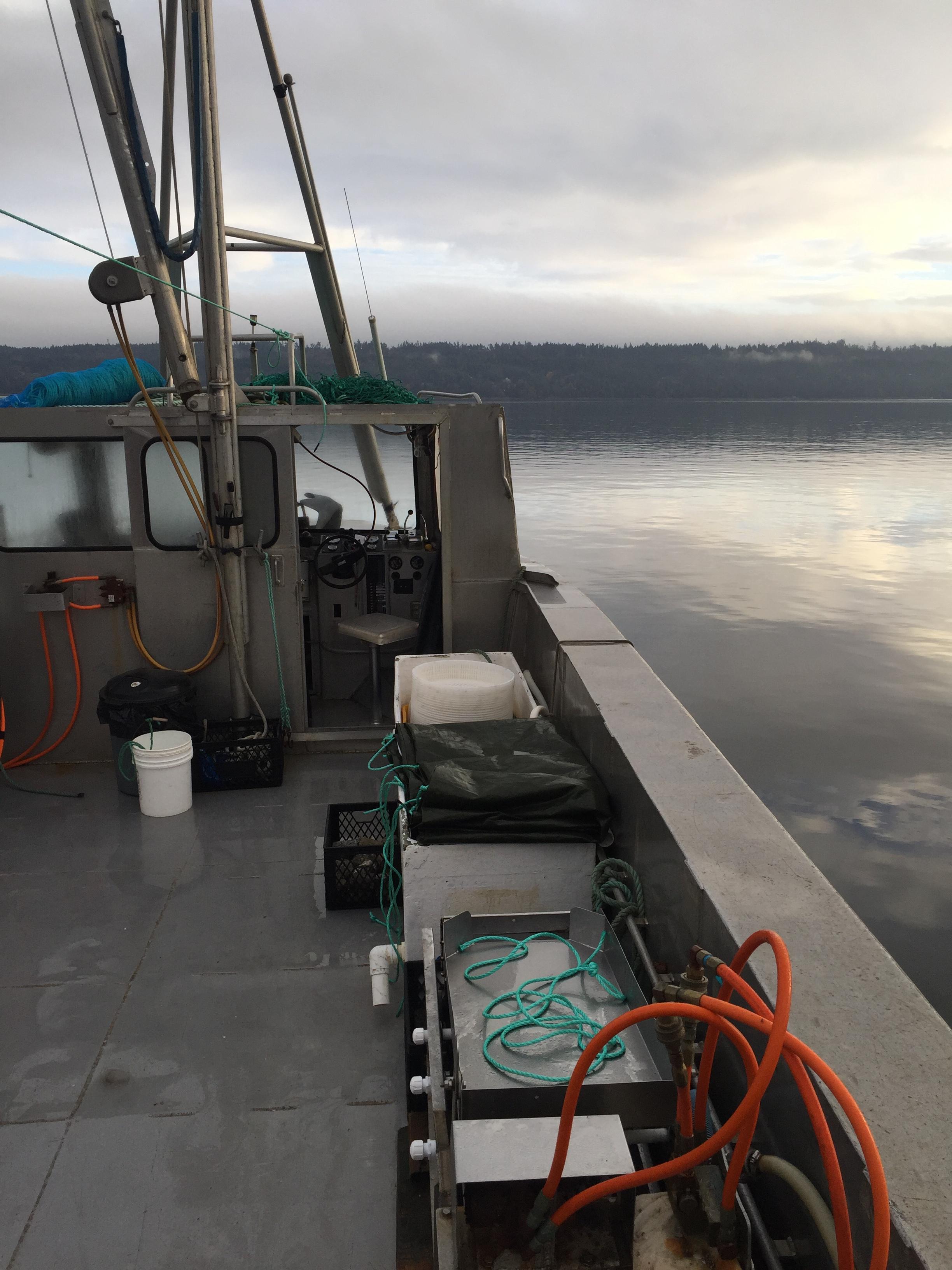
.png?width=345&name=qrScanExample%20(1).png)


.jpg?width=300&name=Image%20from%20iOS%20(39).jpg) regulations is painful. No one became a farmer because they wanted to do paperwork.
regulations is painful. No one became a farmer because they wanted to do paperwork. 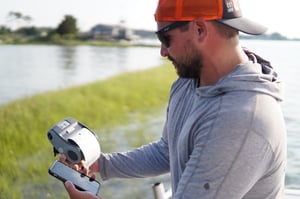 The future is becoming more obvious. Now distributors can scan in the tag information--saving them time and money. The QR codes lets us pass extended information that folks always want but doesn't fit on the tag (say tasting notes or a farmer
The future is becoming more obvious. Now distributors can scan in the tag information--saving them time and money. The QR codes lets us pass extended information that folks always want but doesn't fit on the tag (say tasting notes or a farmer 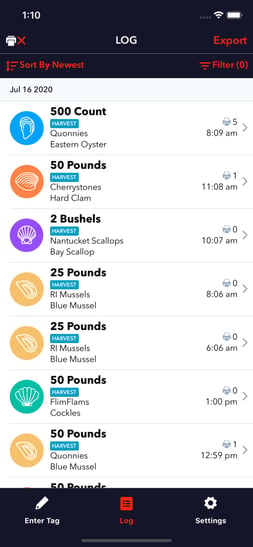
.png?width=2048&name=Image%20from%20iOS%20(25).png)

